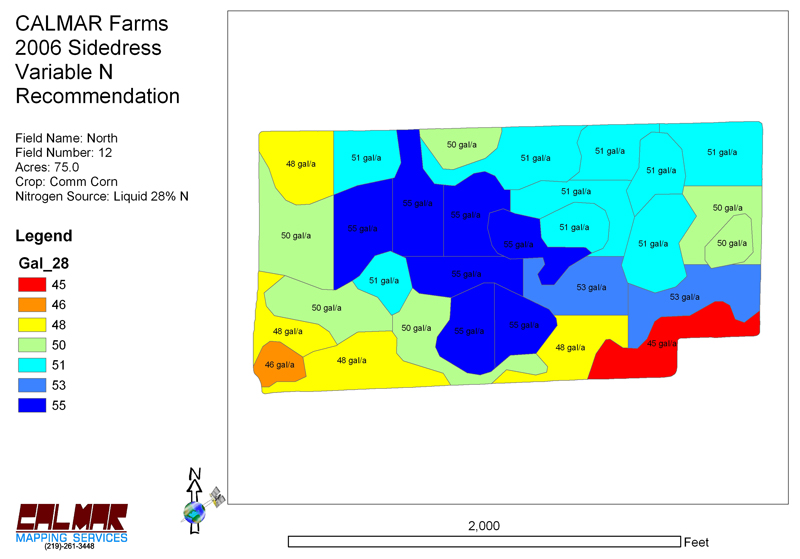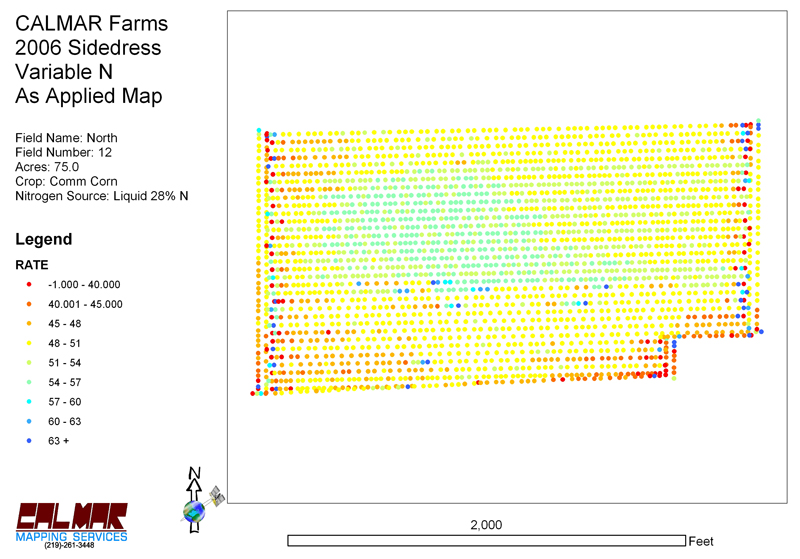Variable Rate Technology Recommendations
With the cost of inputs continuing to rise, it is
becoming more and more important to properly manage the application
of fertilizer & lime. One way to do this is through the use
of Variable Rate Technology (VRT) to apply varying amounts of
fertilizer across a field according to the needs of the crop.
Many people already do this with their lime, potash, and/or phosphate.
Some are beginning to do this with nitrogen. CALMAR can help you
make the leap.
Lime, potash and phosphate recommendations are usually
made according to soil test results. Amounts of lime and fertilizer
are varied depending on the amount needed to bring the soil results
to a "target" value. Sometimes this may take multiple
applications, sometimes it can be done all in one application.
The "target" value can vary depending on many factors.
Call CALMAR's Mapping Office to speak with our VRT experts.
In many ways, the use of VRT with nitrogen has lagged
behind lime, potash, and phosphate. However, as the cost of nitrogen
continues to rise, many are looking to VRT to help manage their
nitrogen use and application.
Our VRT nitrogen program starts using a map of the
broken into management zones. The management zones are usually
the same modified grid zones we use for soil testing, but they
can be different. A target yield is assigned for each of these
management zones. The target yield can be determined by previous
years' yield maps, soil types, fertility levels, or a number of
different factors. Yield history is the most common.
The images below show how two previous yield maps
are combined with a management zone map to create a target yield
map. Click on each one to display a larger image.




Once target yields have been determined for the
whole field, one or two soil nitrate sample locations are selected
within the field. The locations are determined by the target yields.
Usually one sample in a high target yield area and one in a low
target yield area. The values from these soil nitrate tests will
help determine how much nitrogen is already available to the crop
from the soil.
Then target yield values, soil nitrate results,
and previous nitrogen applications (including starter fertilizer
and manure applications) are used to calculate how much nitrogen
the crop will need to produce the desired yield. The result is
a variable rate nitrogen recommendation that can be used in the
field.

Many variable rate applicators have the ability
to record the amount of fertilizer being applied. CALMAR can also
map these results for record keeping and billing purposes.

Variable Rate Technology is an effective way to
manage your inputs. It may not reduce your overall input bill,
but it will reallocate the inputs so they are used more effectively.
Previous
Page